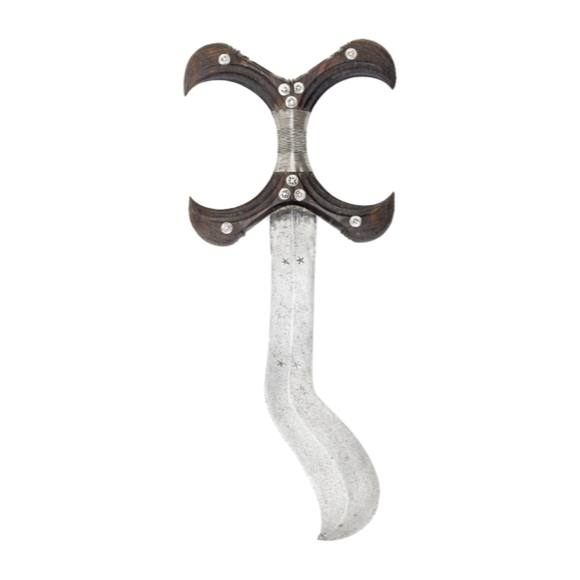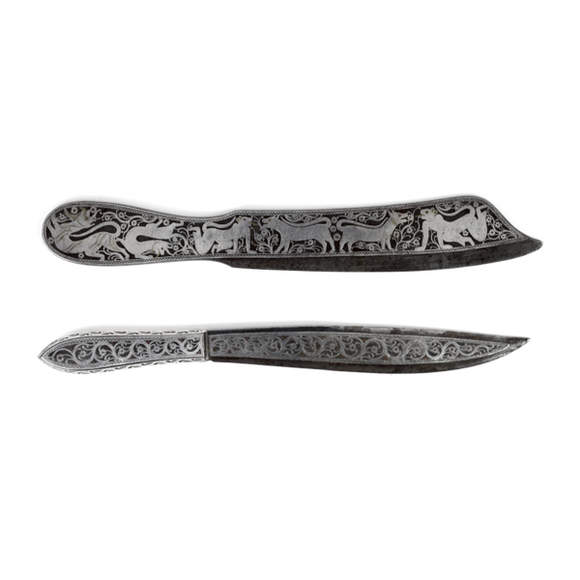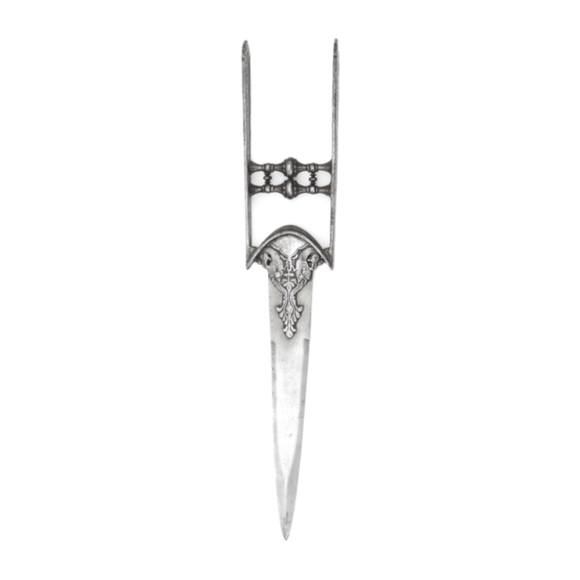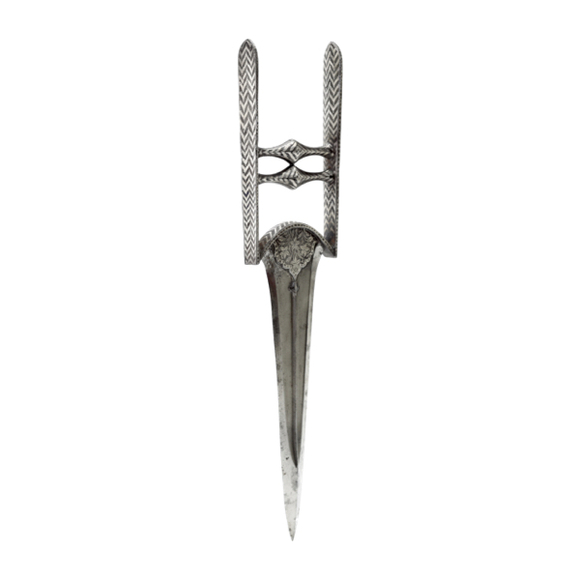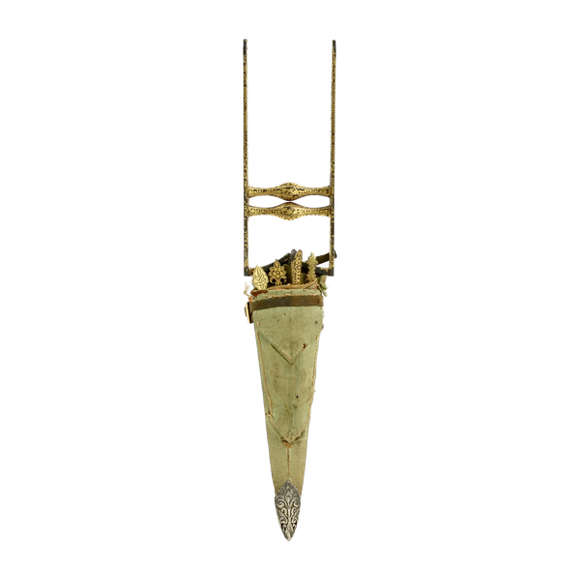These handsome daggers were worn by the nomadic Hadendoa people, their name has been interpreted as meaning…

20 cm
11.7 cm
5 mm at base
5.5 mm at center
(distorted, as iron swells when rusting)
Base 46 mm
At swelling 26 mm
120 grams
Bronze, iron
Khmer Empire
Circa 950-1050 A.D.
From a French private collection.
Acquired in 1990.
Introduction
The Khmer empire was a Hindu/Buddhist empire that ruled much of Southeast Asia between the 9th and 15th centuries. It is today mostly known for Angkor Wat, a large temple complex in the capital of Angkor which during its peak was the largest urban center in the world at that time. This dagger, however, dates from even before Suryavarman II ordered Angkor Wat to be built.
Most Khmer material culture left to study today appears in the form of bronzes and stone statues. Khmer arms and armor are very rare. One of the most notable known pieces is a dagger in the Bostom Museum of Fine art, accession number 68.289 which is dated to 1040-1041 A.D.
This example
In this article, I present you with an old and rather pleasantly formed Khmer dagger with an iron blade and a bronze hilt.
The blade follows a rather similar profile as the piece referenced above. The hilt is quite different, with the guard quillons turning forward towards the blade, and a longer, more narrow stem-like hilt. The center of the hilt is nicely carved with fish scales, and at both sides flares out in a crown of stylized flower petals. The pommel is a notched lozenge-shaped profile, with each cardinal projection being in the form of a highly stylized flame. It has a bud-shaped finial on top.
Dating
Khmer artwork generally doesn’t depict people with weapons, so its hard to find any direct comparables in the art that can serve as a benchmark for dating. However, the ornamental shape of the pommel is often seen on headbands or jewelry worn by deities. This design element went through an evolution over time, which makes it possible to pinpoint the date of the dagger with some accuracy.
This specific design element first starts to appear in the early 10th century, see for example a Shiva Head in the Brooklyn Museum, accession number 83.182.5. Closer to our dagger pommel even is the feature seen in the headband of a Head of Vishnu in the Boston Museum of Fine Arts, accession number 26.13, as well as two very similar Devatas, Asian Art Museum of San Francisco accession number B 68 S 19 and Arthur M. Sackler Gallery S1987.909.
The design gets especially close to the dagger pommel on a devata in an anonymous private collection, published in Adoration and Glory: The Golden Age of Khmer Art, page 130-131. Dated 9th to 10th century. Also see a Harihara Head, dated mid 10th century in the Arthur M. Sackler Gallery, accession number S1987.900.
The stylistic period of our dagger seems to end around the second half of the 11th century when the design starts to take one of two distinctly different forms. In one, the four projections break out of their lozenge form and become more like a cross. For this step in the evolution, see a female Deity, dated 3rd quarter of the 11th century in the Radcliffe Collection. Published in Adoration and Glory: The Golden Age of Khmer Art, page 232-233.
Conclusion; The dagger most likely dates from circa 950-1050 A.D.
Condition
Hilt in very good condition for age. As can be expected on a piece that is 1000 years old, the blade has deteriorated and some flakes have been glued black on, but still keeps most of its overall profile.
Provenance
From a French private collection. Acquired in the 1990s.
Conclusion
A very rare example of a thousand-year-old Khmer dagger, one of less than a handful of examples I know to exist.
It shows the very good workmanship in bronze that this culture was known for. A comparison with stylistic elements found on Khmer statues points out that it most likely dates from the 10th to early 11th century.
Comes with a custom stand.
References
For an excellent overview of stylistic changes over time, study the many statues presented in: Emma C. Bunker and Douglas Latchford: Adoration and Glory: The Golden Age of Khmer Art. Art Media Resources, Chicago, 2004.












Of a style often associated with Tanjore, the seat of the Vijayanagara empire.

